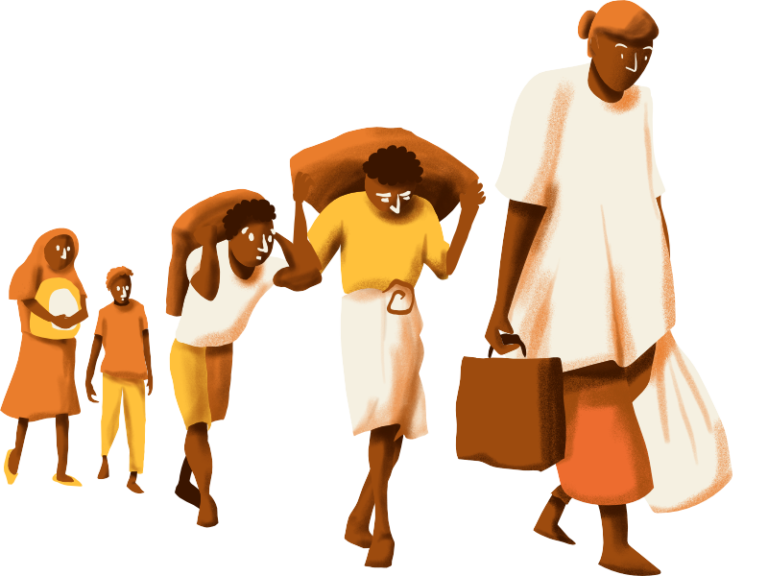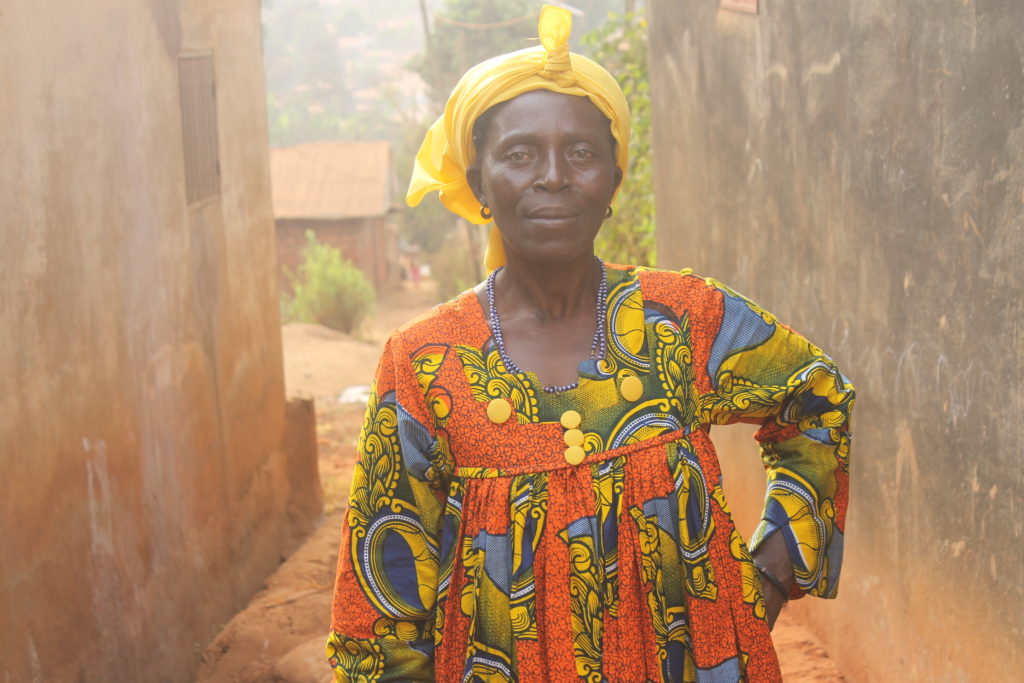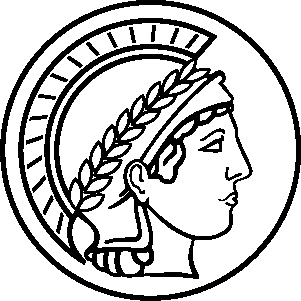
Ageing internally displaced persons in Cameroon
Nele Wolter
With the abolition of federalism in the 1970s, the conflict between the smaller anglophone part and the francophone majority within Cameroon began to intensify. It escalated when peaceful demonstrations by lawyers and teachers of the English-speaking minority were violently suppressed by military forces in 2016. Following that, the conflict led to armed fights between anglophone separatists and the government that last until today that affect the English-speaking population of the Northwest and Southwest regions tremendously.

The arbitrary violence and severe attacks caused the massive migration of several hundreds of thousands of civilians to Nigeria and the francophone regions within Cameroon. The displaced families are facing marginalization, discrimination and lack access to their basic needs. Personal resources and solidarity ties help them to overcome daily burdens and to find their way back into an ‘ordinary’ life in their makeshift homes.
With the abolition of federalism in the 1970s, the conflict between the smaller anglophone part and the francophone majority within Cameroon began to intensify. It escalated when peaceful demonstrations by lawyers and teachers of the English-speaking minority were violently suppressed by military forces in 2016. Following that, the conflict led to armed fights between anglophone separatists and the government that last until today that affect the English-speaking population of the Northwest and Southwest regions tremendously.
The arbitrary violence and severe attacks caused the massive migration of several hundreds of thousands of civilians to Nigeria and the francophone regions within Cameroon. The displaced families are facing marginalization, discrimination and lack access to their basic needs. Personal resources and solidarity ties help them to overcome daily burdens and to find their way back into an ‘ordinary’ life in their makeshift homes.


Bamenda/Northwest region
Bamenda, the third largest city in Cameroon with 350,000 inhabitants, became a target place for many internally displaced persons from the rural Northwest region since 2017. Compared to remote villages in the region, the city offers more safety to its anglophone population although violence and atrocities happen there too. Nevertheless, Bamenda is also a gateway for the displaced to continue their escape to places in the bordering francophone regions in Cameroon. In Bafoussam, for example, Bamenda has become a synonym for internally displaced Cameroonians who are sometimes addressed in French: Tu es Bamenda? (Are you Bamenda?)
Bafoussam/West region
Bafoussam is both a transit city and also a destination for internally displaced persons particularly from the Northwest. The similar climate and lower rents and prices for consumer products seem more attractive than the blistering heat in Douala or tremendously high living costs in Yaoundé.
Please click on one of the hotspots
Older Internally Displaced Persons in Cameroon
A large share of the internally displaced are young men or women who often escape together with their children to send them back to school in the francophone regions. Nevertheless, they are often accompanied by older relatives who considerably support the families with their expanded social networks, working experiences, and other forms of assistance.
Facing the Anglophone Crisis
The political situation in Cameroon
Cameroon used to be considered a peaceful country amidst a turbulent region in Sub-Saharan Africa. Long-time president Paul Biya kept the country quite stable but political reforms in the past increased the marginalisation of the population in the two anglophone regions and led to growing discontent among its civilians.
Following the rise of the so-called “Anglophone Crisis” the numerous internally displaced persons throughout the country find little or no assistance from the government to fulfil their everyday needs. Thus, those older displaced persons who cannot find work in the informal sector or who are physically constrained are among the most vulnerable groups.

The past, the present, and the future
The migration of older anglophone persons in response to the conflict reveals in its own sense how the different temporal dimensions are linked according to the life course of each person. Many of them aim to go “home” once the conflict is over but they also adapt their future plans to the ongoing situation by finding new jobs, building new homes or reuniting families in the francophone regions.

Solidarity
Fortunately, many of the internally displaced encounter great solidarity among the Cameroonian population. Special solidarity groups have been founded to support each other and religious communities also contribute to social cohesion.

Facing the Anglophone Crisis
The political situation in Cameroon
Cameroon used to be considered a peaceful country amidst a turbulent region in Sub-Saharan Africa. Long-time president Paul Biya kept the country quite stable but political reforms in the past increased the marginalisation of the population in the two anglophone regions and led to growing discontent among its civilians.
Following the rise of the so-called “Anglophone Crisis” the numerous internally displaced persons throughout the country find little or no assistance from the government to fulfil their everyday needs. Thus, those older displaced persons who cannot find work in the informal sector or who are physically constrained are among the most vulnerable groups.
The past, the present, and the future
The migration of older anglophone persons in response to the conflict reveals in its own sense how the different temporal dimensions are linked according to the life course of each person. Many of them aim to go “home” once the conflict is over but they also adapt their future plans to the ongoing situation by finding new jobs, building new homes or reuniting families in the francophone regions.
Solidarity
Fortunately, many of the internally displaced encounter great solidarity among the Cameroonian population. Special solidarity groups have been founded to support each other and religious communities also contribute to social cohesion.
Approx. 27 million people live in Cameroon belonging to over 200 ethnic groups.
80% live in the francophone part, 20% in the anglophone part of Cameroon.
Over 700,000 people have been displaced from the Northwest and Southwest regions since 2017.

